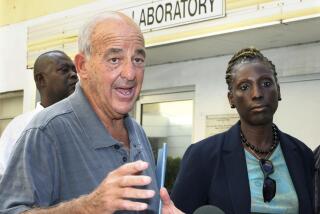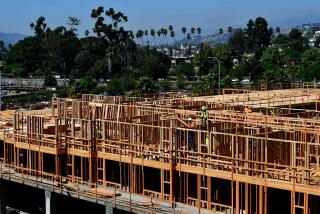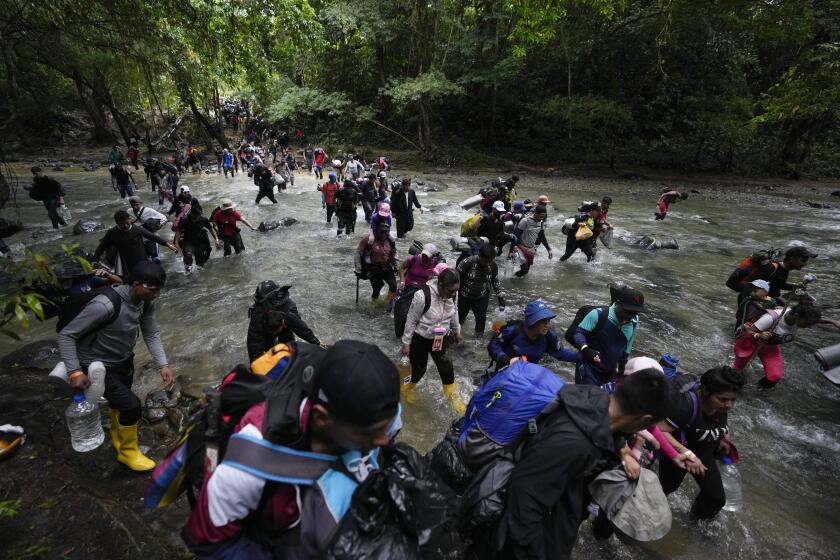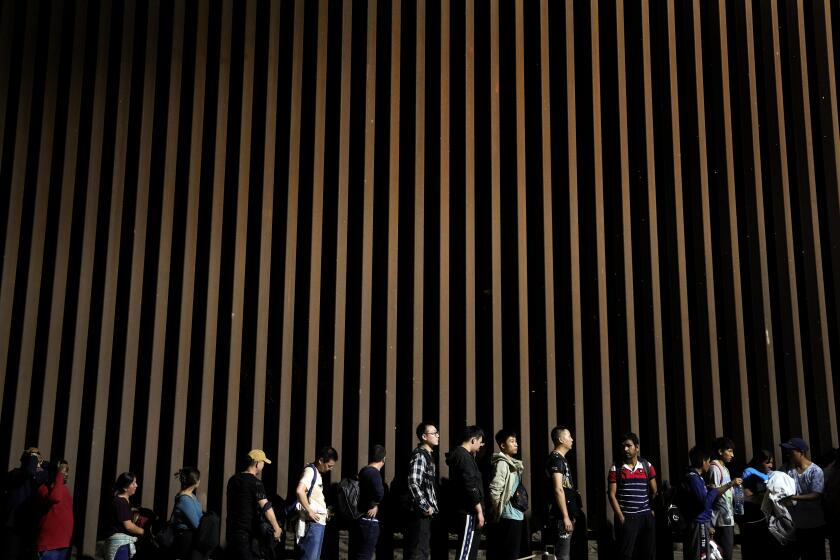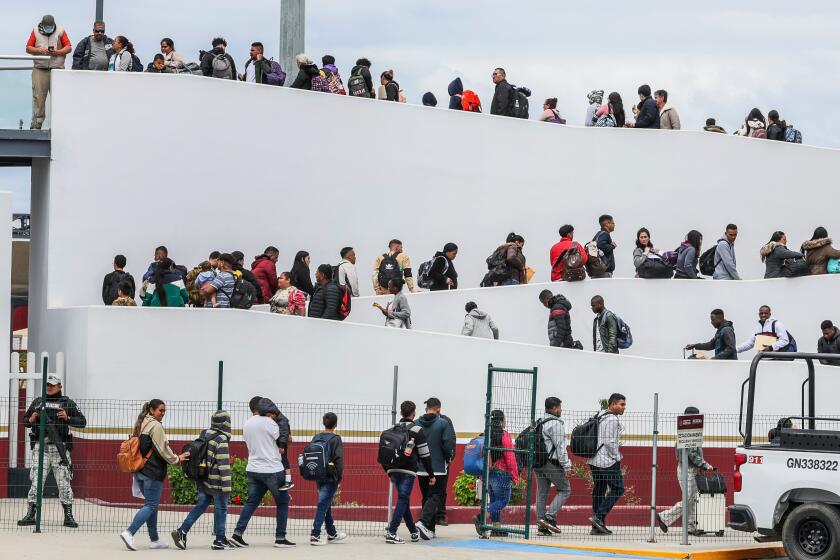Legalized Aliens Find Amnesty Can Be Passport to the Homeland
Raul Hernandez crossed the Rio Grande one recent night for the first time in seven years.
Last time, he was crouched in the back of a smuggler’s truck, heading north to a tenuous new life as an undocumented immigrant in the United States. This time, he was behind the wheel of his own blue and gray Ford Explorer, rolling down I-35 from Austin, Tex., chasing a brilliant crescent moon to Mexico.
Riding next to him was his son, Juanito. Bouncing merrily in the back of the cab were his daughter, Cynthia, and two young cousins, Karen and Vincent.
The truck’s bed was stocked with sacks of groceries and furniture for his in-laws. And in his wallet was the prize that made this homecoming possible, a card proving that Raul Hernandez, 38, was a legal, temporary U.S. resident, free to traverse the river.
The drive from Austin to the border took 5 hours, including a wrong turn in San Antonio, but in a sense, the journey took all of those seven years.
Could Not Return
Until February, when Hernandez received his temporary residency permit as the final step in the amnesty process provided by the Immigration Reform Act of 1986, Raul could not return to his childhood home in Nuevo Laredo without risking arrest and jeopardizing his family’s life in Austin.
He had learned that it was easier to sneak out of Mexico with nothing to lose than to attempt to return with hope, promise and employment--but without a green card. He never considered going home without one, not even when his father died three years ago.
When the Immigration and Naturalization Service’s regional office in Dallas sent word that his amnesty application had been approved, Hernandez thought the envelope contained a hospital bill for his son’s foot operation. He choked up when he realized what it was.
There was no doubt what he would do next: “At last, you are coming home,” his mother, Maria, said when Hernandez called that day.
Two days later, after receiving a day’s leave from his job cutting chicken at a fast-food restaurant, Hernandez was on his way to Nuevo Laredo to see her, his wife’s family, younger brother Alfredo, his friends on the soda-truck route he once drove, and the streets of a city he roamed for the first 31 years of his life.
Hernandez was smiling as he crossed the old bridge from Laredo. On the other side, he encountered a Mexican customs agent who, with a simple gesture, reminded him who he had become and what he had left behind.
After all the tolls he had paid--physically and psychologically--to be able to make this return trip, he was being asked to pay one more. Welcome back, favorite son.
“What do you have in the truck?” the agent asked.
“Oh, I’ve got a couple of things,” Hernandez said. “Food, a chair, just things for some errands.”
The agent asked for a $10 bribe. They call it la mordida in Mexico, “the bite.” Hernandez had not been bitten in many years, but he had not forgotten the antidote.
“I only have $2,” he said.
The inspector asked for $3. A small price to pay for such a meaningful trip, Raul thought. He handed three bills out the window.
“Have a nice day,” the inspector said.
Hernandez ventured through the dark streets of his old hometown, narrow and crowded after the avenues and boulevards that had become so familiar to him in Austin: Red River, Airport, Manor, 45th. Everything here looked different from what he remembered--not foreign, but different. Perhaps he would never look at Mexico the same way again.
Returning here, Hernandez was doing more than paying homage to his roots; he was completing a cycle that demonstrates both the limits and the resilience of American society. Within seven years, Hernandez had taken part in two great mass movements.
The first, underground, brought millions of people into the United States illegally from the south as they fled poverty and violence and sought opportunity.
The second, a matter of public policy, has brought 1.2 million of them out of the shadows to apply for recognition under the historic, yearlong amnesty program that ends in May.
The INS estimates that at least 7 million undocumented immigrants live in the United States. Those who arrived before Jan. 1, 1982, may apply for amnesty. So far, according to INS spokesman Duke Austin, nearly 92% of the applicants are being approved, and fears of widespread fraud have not been realized, except in the special program for agricultural workers, who merely had to claim that they had worked in the country for 90 days.
Few Fraud Cases
Austin said that for the general amnesty program, only 40 fraud cases are being investigated.
Slowly but surely, by the tens of thousands, people like Raul Hernandez are entering the U.S. mainstream. With their work permits and valid Social Security cards, they are flocking to night language classes to learn English, looking for better-paying jobs and traveling the country without fear.
Hernandez and his wife Marta were among the first applicants in Austin when the amnesty program began last May. They had receipts and documents to prove that they had been in Texas since 1981, but Raul was so nervous that he lost 20 pounds, and his diabetic condition worsened as the filing day approached. After May, when they received temporary work permits, his anxiety diminished. But by Christmas, he was getting nervous again.
Why were their temporary-residency cards so long in coming? Their lawyer, Barbara Hines, could say only that the bureaucracy sometimes works in strange ways.
Nearly 10,000 people in the Austin area had applied for amnesty, and about 3,000 had been accepted by the end of 1987. Most of them had applied long after Raul and Marta applied. Her sisters, Carmen and Alice, applied months later and were accepted promptly.
As it turned out, Hines was right. The early applications were sent to a processing center in Kentucky that was overloaded and disorganized.
Marta could not get the day off from work for the homecoming, but when her husband and the four children reached Nuevo Laredo, they drove first to her parents’ house in the southern end of the city, in Colonia Infonavita. Sleeping quarters were cramped, and by morning, Hernandez was raising his eyebrows at the thought of trying to control the kids all weekend.
They were active youngsters to begin with, and Mexico made them more so. Juanito and Cynthia said they loved it here; the streets were full of people and dogs and colors and junk, and there was something to see or do at every corner. Austin, in comparison, seemed neat and wide open and boring. This was a child’s delight.
In the morning, Grandmother Gonzalez made migas (scrambled eggs with onions) and coffee for Raul, Grandfather Joe and Little Joe Gonzalez, Marta’s younger brother. He was the one sibling who chose not to move to the United States, but life was getting more difficult for him. Eight months ago he had surgery on his leg and has been on leave from the local Coca-Cola plant ever since.
“I worked there 16 years,” said Little Joe, wearing a Big League World Series cap. “But now I may never work again, and I’m the one who is supposed to support the people here, my mother and father and the house.”
No More Baseball
The varicose veins also will keep Little Joe from playing baseball again. He was a pitcher, just like his father, who once pitched for a team of Nuevo Laredo waiters against a traveling squad featuring Satchel Paige. “El Mejor,” Old Joe said of the greatest pitcher in the history of the Negro Leagues. “The best ever! I would take care of the baseballs for him when he pitched.”
After breakfast, Hernandez and the children drove across town to his mother’s little blue and yellow house on Calle Sonora, a bumpy ride down unpaved streets with large potholes. Maria Hernandez Miranda rushed from her front door as soon as the truck rounded the corner. Her smile when she hugged Hernandez lit the gray morning.
“I feel so good,” she said, sitting in her bedroom under a painting of her and her late husband as a handsome teen-aged couple. Forty years later, she is still beautiful, especially in the company of her oldest son.
“My other kids have come home. They all came home when my husband died. Except Raul. He could not come. It hurt that he could not come. But now I finally have him, and he looks so good. They are better off in America.”
Hernandez visited the small, pink house on Calle Peru that he had bought 10 years ago for 32,000 pesos. Today, at an exchange rate of 2,200 pesos to the dollar, that figures to a little more than $14.50.
When the Hernandezes left for Texas, Raul wanted to sell the house, but Marta said they should keep it so they would have someplace to come back to in case they were deported. Hernandez rented it out, except for one room that he kept for storage.
He wrestled for about two minutes with the stubborn lock on the storage-room door. When it opened, he and his mother-in-law and the four children peered into a time warp. On the back wall, two pictures of Raul and Marta at their wedding hung precariously from a hook. The floor was piled with artifacts: a big wheel missing a tire, spatulas, blankets, pails, paint brushes.
Cynthia and Karen found two jump ropes in the bottom of the pile. They pulled them out, ran out to the sidewalk and jumped with glee. Growing bored, Juanito and Victor scooted outside to a hill of dirt in the side yard that rose nearly to the top of an adobe wall. Up and down the hill they ran.
But Hernandez could not leave the musty old room so easily. He stayed a few minutes more, looking around wistfully, before spraying the lock with oil and closing the door on the life he left behind.
More to Read
Start your day right
Sign up for Essential California for news, features and recommendations from the L.A. Times and beyond in your inbox six days a week.
You may occasionally receive promotional content from the Los Angeles Times.
